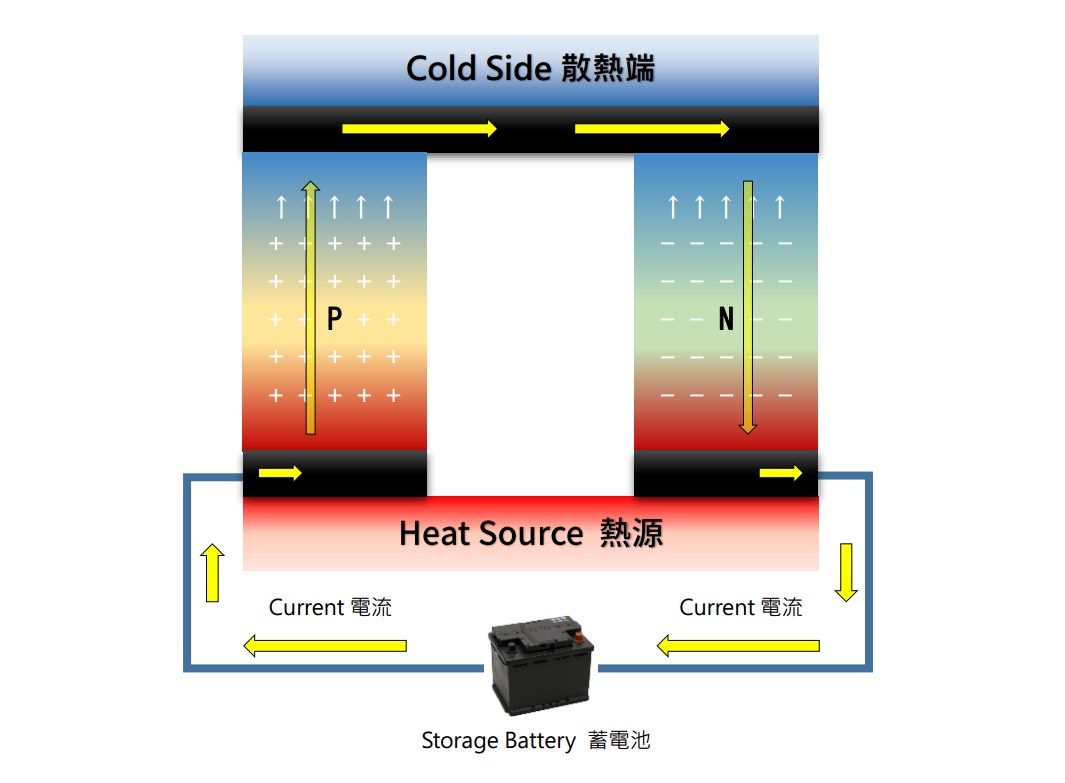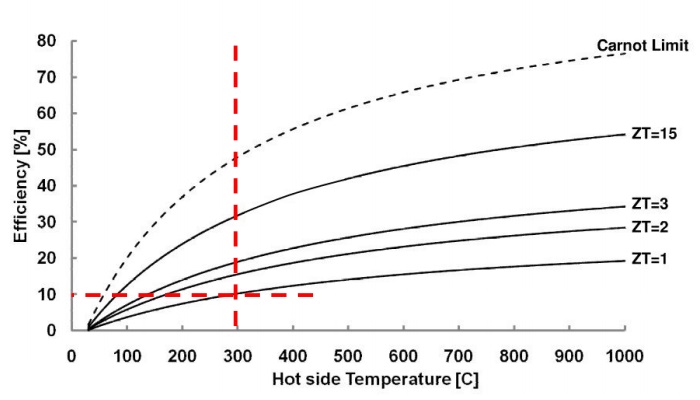The Research of Thermoelectric Materials and Applications
The thermoelectric effect, which is also known as Seebeck Effect. It’s the direct conversion of temperature differences to electric voltage and vice versa. It was found by a German physicist, Thomas Johann Seebeck in 1821. Seebeck found two metal composited compass, during temperature changes, the magnetic field was influenced. Therefore, he named it as thermal magnetic effect . After, the Danish physicist Hans Christian Ørsted, correct it by "thermoelectric effect".
Nowadays, the commercial Thermoelectric Analyzer, SeebeckPro, is also introduced to the market.
Research of Thermoelectric Materials
For thermoelectric materials research, scientists focused on the following performance factors:
- Conductivity (σ): the current get through the intersection area of material (S / cm)
- Seebeck Coefficient (S): the voltage which is generated by temperature difference (V / K)
- Thermal Conductivity (κ): the heat transduced in the unit temperature difference during the time, by the condition of intersection area and the length of the material.
These three parameters, can be integrated into a "Device Efficiency (Z)" to evaluate the future potential thermoelectric material, as the following formula:
![]()
Wherein, σ • S2 is the power factor, which is the power generated by temperature difference. If one considered the absolute temperature together, then, we could be able to evaluate the business benefits of a thermoelectric materials, which is referred by "thermoelectric figure of merit":
- ZT> 1, 13%, have potential commercial value
- ZT> 2, 20%, potential for a large-scale commercial value
- ZT> 3.5, 35%, efficiency of the thermoelectric material is close to the compressor

The below figure shows the different ZT value, relative to efficiency curve and temperature, the dashed cross intersection point, is the current commercial thermoelectric material, most likely close to 1 of the ZT value.

The Curve of Thermoelectric Efficiency
Thanks to Dr. Yeh, Chien-Hsuan of ITRI for the above technology guide to ACTTR Technology.
Research Instrument
Thermoelectric Effect requires the control of heating and electric measurement, to which can be achieved by a furnace with temperature controller and a DMM. However, by this kind of equipment, it is difficult to have good temperature profile control, nor the temperature isolation. It can easily cause the errors in the result.
Thus, the modern commercial thermoelectric analyzer is introduced to the market, such as SeebeckPro, which is from SETARAM, the vendor in France. SeebeckPro Thermoelectric Coefficient Analyzer can measure both the Seebeck coefficient and resistance simultaneously by the preset temperature profile. In addition, the furnace design, also considered the characteristics of various thermoelectric materials (its shape, properties), and the rapid temperature raising and cooling flexible design. By the maximum flexibilities to satisfy the requirements with various thermoelectric materials. SETARAM, a professional manufacturer of thermal analyzers, with its nearly 60 years of experience in the design and manufacture of thermal analyzers, brought to you the best solution of Seebeck Analyzer..
Related Applications
Power plants, steel mills, heat recovery (heat smoke exhaust pipes, the furnace wall, radiant heat)
Boilers, water heaters, waste heat recovery power generation (hotel, spa, households)
Engine cogeneration (automobiles, ships, aircraft, military vehicles)
Regenerative aluminum car shell
Automotive thermoelectric air conditioning
Electric vehicle batteries thermostat
Quantum well solar power
Refrigerators and freezers
Radioisotope generators spacecraft (Spacecraft Radioisotope Thermoelectric Generator)
Wearable device micro generator (permanent hands-table, soldiers of military equipment)
Remote wireless sensors power generator (small remote device)


